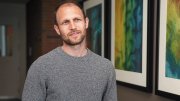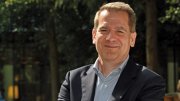“In some deep sense, memory is at the core of life,” says neuroscientist and professor of psychology Samuel Gershman, midway through a story about the “wild voyage” that led him to his current quest. He and his lab are working to develop a computer model that can “think” like a single-celled organism—specifically, a trumpet-shaped pond dweller called Stentor. “As soon as life existed,” Gershman explains, “memory existed. A cell is basically just a membrane enclosing a bunch of molecular material, and its primary job is to remember the difference between the inside and the outside—and to maintain that memory in the face of constant perturbations from its environment.” To respond adaptively, “it has to learn and remember.” But how, without neurons and synapses, without brains? That’s what Gershman hopes to discover. Growing up in Chicago in the 1990s, he was always intrigued by the idea that computers could think, which prompted other questions: How do humans think? What does thinking even mean? These profundities seemed to point toward the humanities until he took a “captivating” course on cognitive neuroscience as a Columbia undergraduate. The following summer, he worked in a lab studying human memory and from there went on to pursue a Ph.D. at Princeton in psychology and neuroscience, then a postdoc at MIT. These days, his work combines biological experiments with computer programming and artificial intelligence, building models to simulate everything from language to vision to decision-making. In 2024, Gershman won the Schmidt Sciences Polymath award, which recognizes boundary-pushing research and comes with a $2.5 million prize. Outside the lab, he’s often at the piano; he and a colleague have been practicing duets, including César Franck’s “Sonata in A major for Violin and Piano.” The music is beautiful and difficult—a different kind of exercise in learning and memory.
How Do Single-Celled Organisms Learn and Remember
How Do Single-Celled Organisms Learn and Remember
A Harvard neuroscientist’s quest to model memory in single-celled organisms

Samuel Gershman | Photograph by Kris Snibbe/Harvard Public Affairs and Communications
You might also like
Five Questions with Michèle Duguay
A Harvard scholar of music theory on how streaming services have changed the experience of music
Harvard Faculty Discuss Tenure Denials
New data show a shift in when, in the process, rejections occur
Five Questions with Andrew Knoll
A paleontologist on how to understand Earth’s biggest extinction event
Most popular
Explore More From Current Issue

Harvard Economist Wolfram Schlenker Is Tackling Climate Change
How extreme heat affects our land—and our food supply

Books with Harvard Authors Winter 2025
From aphorisms to art heists to democracy’s necessary conditions






